Queen Victoria’s reign defined not only an ideological and political movement, but an aesthetic one as well, which was embraced throughout the United Kingdom, later through much of Europe, and ultimately, in the United States. She was respected culturally as a woman of the people, and creatively as a trend-setter, as her taste in furniture influenced the stylistic sensibilities of her people. Victorian furniture is known for its ornateness, orderliness, and eclectic approach to unifying design themes from a variety of periods into a coherent framework. While it incorporated elements of Renaissance, Rococo and Gothic influences, Victorian Furniture is often characterized by its use of velvet, hard woods with dark finishes, intricate tufting, detailed needlework, floral patterns and romantic imagery. During the Victorian era, furniture manufacturing shifted largely from hand-made to machine-made, making it far more accessible, and because of this, Victorian Furniture was an all-encompassing genre that included all types of furniture, from chairs, settees & sofas to end tables, coffee tables, beds and case goods. Victorian Furniture remains widely popular today and has enjoyed longevity through its influences in 20th century design; Chesterfield sofas, for instance, a staple of Victorian design are arguably more popular in the 21st century than ever.
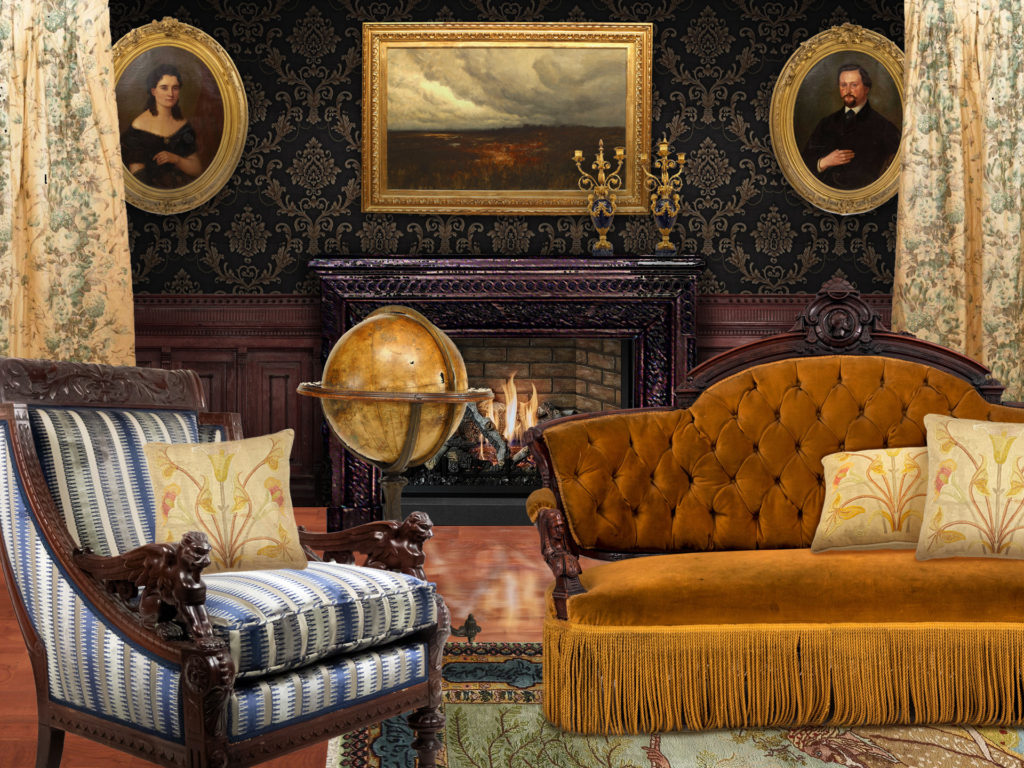
The Victorian era brings us endless inspiration here, and we’re proud to call Newel home to hundreds of English, French and American Victorian pieces. When we’re not assisting clients, designing spaces or re-arranging the showroom with new arrivals, one of our favorite past-times is experimenting with existing inventory. By mixing & matching pieces, we discover new ways that they, together, can tell a story, capture a period in time, and in a way, re-write history. Today, we’ve constructed and deconstructed an authentic Victorian living space.
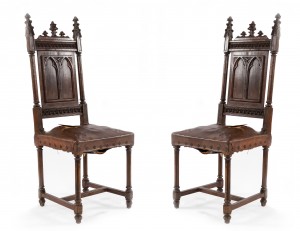
Pointed arches, spires, dark wood finishes and church-inspired ornamentation were characteristic of this period.
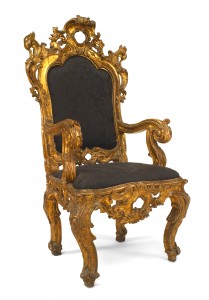
A more ornate, upper-class style whose ornamentation reflected natural motifs such as fruit, shells and flora. More expensive pieces were constructed of Rosewood, while common designers in this style used walnut.
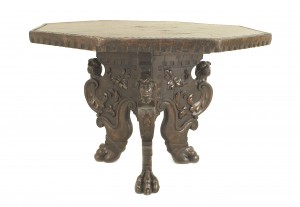
While Rococo found elegance in a feminine design sensibility, Renaissance inspired Victorian Furniture took on more masculine characteristics such as cartouches, human & animal figures, burl panels, and combined Gothic, Egyptian and Greek influences.
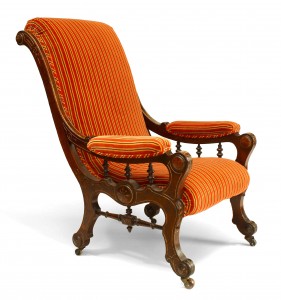
Ornamentation became more refined. Charles Eastlake, for which his company was named, and who called for the production of “simple sturdy furniture” rebelled against the over-the-top embellishment of Rococo inspired pieces. Depictions of flora became more stylized, and overall forms became more architectural. Marvin Schwartz, author of “American Furniture: Tables, Chairs, Sofas & Beds” cites Eastlake’s Victorian Furniture as the “first glimpses of modernism”
Victorian Era Furniture was produced between 1837 and 1901 and originated in England was the first the first style of furniture to be mass produced
Victorian Furniture is known for its dark finishes, ornate embellishments, heavy proportions and gilding, and wood types such as mahogany, oak, walnut and rosewood. Wicker was also a popular construction material during this era.
Unlike many other historical styles of furniture, Victorian Furniture cannot be identified by its style of legs or feet, as it drew upon influences from many other styles. For this reason, it can be said that Victorian, itself, is not a style but a period.
During the Victorian Era, as it became a social norm for people to cover their ankles, furniture legs and feet were commonly concealed by draping of fabric, which according to Marryat’s book, “A Diary in America”, was out of fear that that bare legs were provocative. Others argue this was done to protect their cherished furniture from being damaged.
The Chesterfield Sofa, a staple of Victorian Furniture is as popular today as it was during the 19th century and continues to influence trends in modern upholstery and interior design
The coiled spring was invented and patented during the Victorian era, resulting in shorter legs and more durable upholstery
Newel plants one tree for every new sign-up!
We respect your privacy!